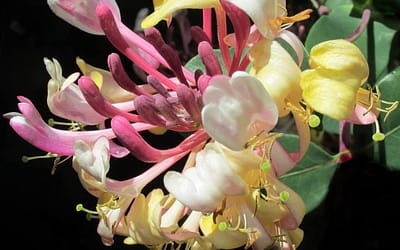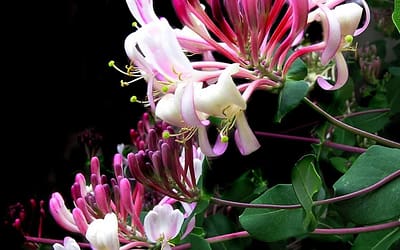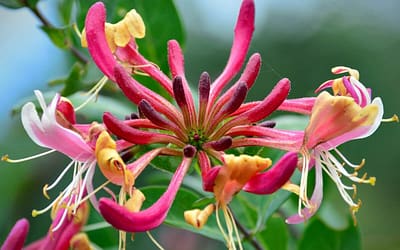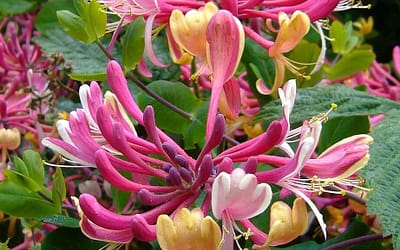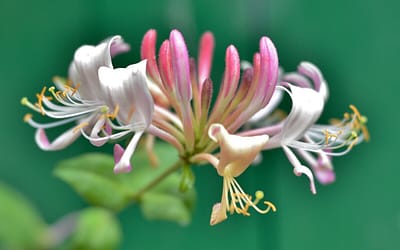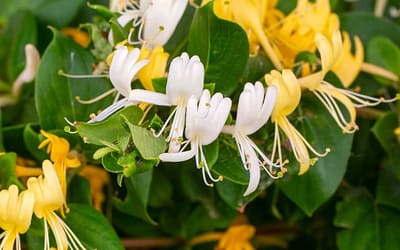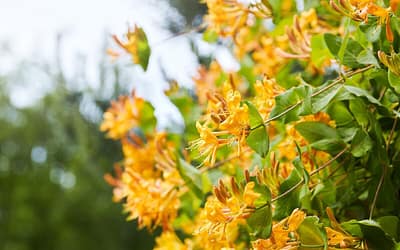Actinidia kolomikta: The Stunning Variegated Kiwi Vine for Your Garden
Variegated Kiwi Vine, Kolomikta, Minchurin Actinidia, Actinidia
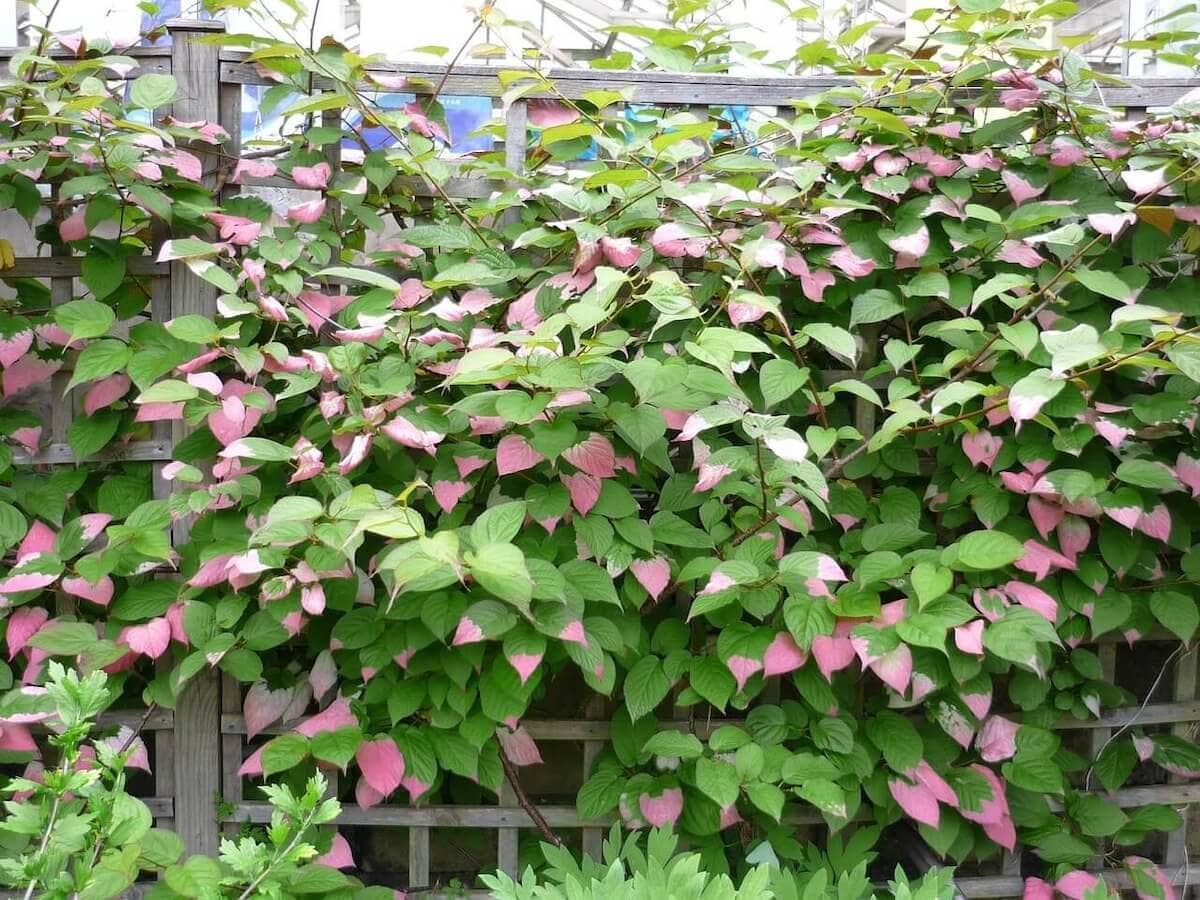
Position
- Prefers full sun to bring out the best foliage colours
- Can tolerate partial shade but may have less vibrant variegation
Hardiness
- Hardy to -10°C (14°F)
Soil Type
- Grows well in well-drained soil
- Can adapt to sandy, loamy, and clay soils
Soil PH
- Tolerates a range of pH, including acid, neutral, and alkaline soils
Height
- Reaches an overall height of 4m (12ft)
Seasons of Interest
- Flowering Times:
- Produces small, fragrant white flowers in early summer (typically June)
- Foliage Variegation:
- Leaves display striking white and pink variegation through spring and summer
- Autumn Colour:
- Leaves may display additional colour in autumn, although the main interest is the variegation during the growing season
Variegated Kiwi Vine: Why Actinidia kolomikta Deserves a Spot in Your Garden
Welcome to the intriguing world of Actinidia kolomikta, commonly known as the variegated kiwi vine. This unique plant can be a standout feature in any garden thanks to its remarkable foliage and hardy nature. Whether you’re an experienced gardener or just starting to explore the joys of horticulture, Actinidia kolomikta is a plant worth knowing.
Overview and Origins
Actinidia kolomikta hails from the temperate regions of East Asia, including parts of Russia, Japan, Korea, and China. It’s known for its ability to thrive in cooler climates, making it a fantastic option for gardeners in areas where other climbers might struggle. This deciduous vine belongs to the Actinidiaceae family, including more familiar cousins like the common kiwi (Actinidia deliciosa).
A Closer Look at the Foliage
One of the most striking features of Actinidia kolomikta is its foliage. The leaves are heart-shaped, typically starting with a lush green shade. As the plant matures, you’ll notice a transformation where the leaf tips develop a striking white variegation, which transitions to pink hues as the season progresses. This delightful colour change provides a dynamic and evolving picture as the months pass, ensuring your vine is a constant subject of admiration.
Flowers and Fragrance
In early summer, Actinidia kolomikta produces small, delicate white flowers. Though not exceedingly conspicuous compared to the foliage, these blooms exude a subtle fragrance that adds an extra dimension of sensory pleasure to your garden. The flowers are predominantly produced on male plants, so a male plant will suffice if you’re growing Actinidia kolomikta for its ornamental qualities rather than fruit.
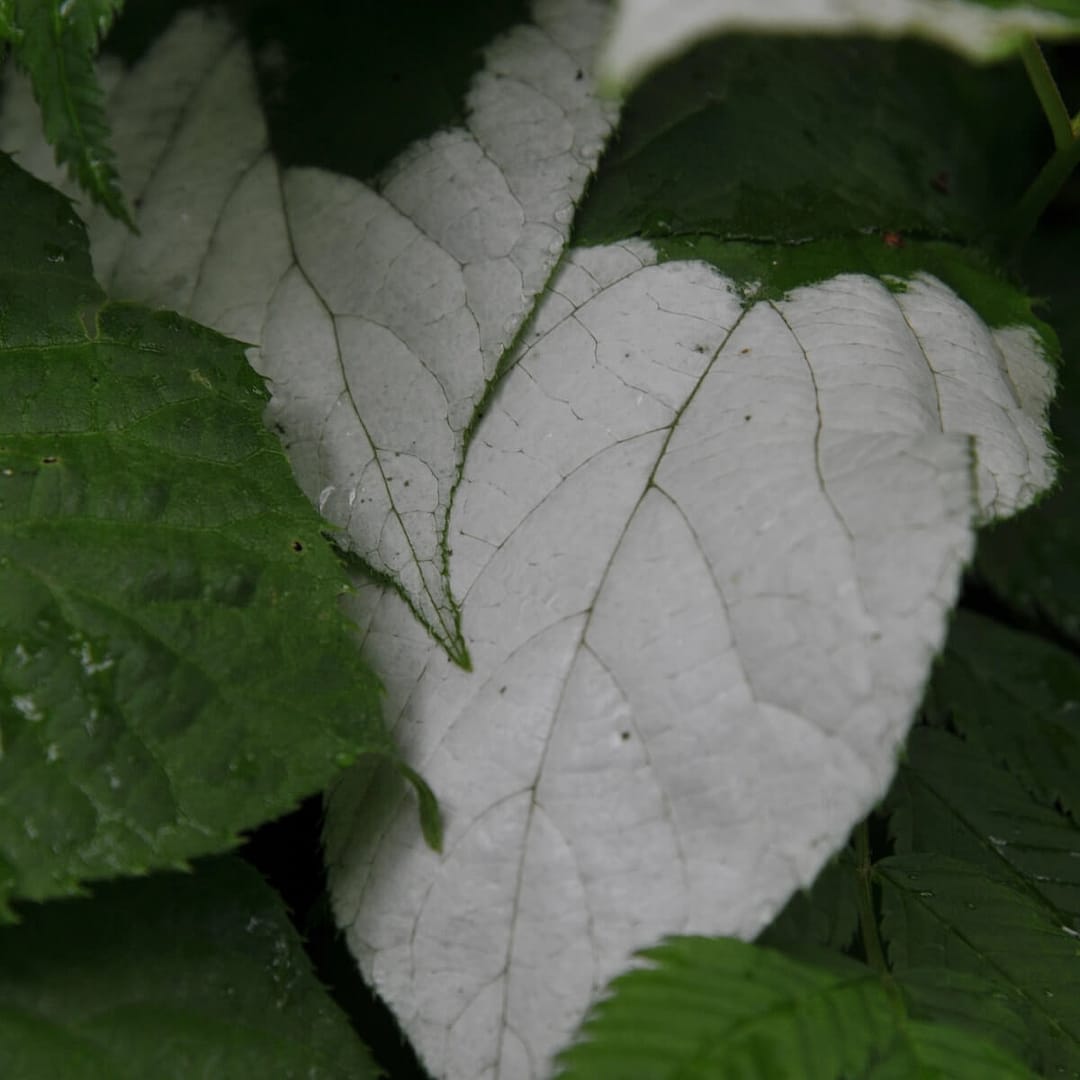
Fruit Bearing Characteristics
While the plant is primarily grown for its beautiful foliage, it can also produce small, edible fruits resembling mini kiwis. These oval berries appear in late summer to early autumn on female plants, provided there is a male plant nearby to facilitate pollination. The fruits are tasty and nutritious, offering a tangy flavour similar to their larger kiwi cousins. Keep in mind, however, that it may take several years for the plant to mature enough to bear fruit.
Growing Conditions
Actinidia kolomikta is quite accommodating when growing, proof of its hardy origins. It prefers a position that offers full sun to partial shade, with a preference for morning sun and afternoon shade in hotter climates. This ensures the leaves exhibit their best colours, especially the variegation.
The ideal soil for Actinidia kolomikta is well-drained yet consistently moist. As long as drainage is adequate, it’s adaptable to various soil types, including sandy, loamy, and even clay. Adding organic matter like compost can enhance soil fertility and improve moisture retention, giving the plant a rich environment in which to thrive.
Support and Training
As a climbing vine, Actinidia kolomikta requires some form of supportive structure to reach its full potential. Whether trained on trellises, pergolas, or arches, this plant can transform ordinary garden structures into stunning, living installations. Its twining stems naturally latch on to supports, so providing something robust enough to handle its vigorous growth is essential.
Pruning and Maintenance
Regular pruning is essential to maintain the health and shape of your Actinidia kolomikta. Pruning should be carried out during late winter to early spring while the plant is dormant. Focus on removing dead or crossing branches and thinning the central stems to improve air circulation. This helps prevent disease and encourages lush growth. Since the plant grows rapidly, occasional trimming throughout the growing season might be necessary to keep it tidy and within its intended space.
Pest and Disease Resistance
One of the joys of growing Actinidia kolomikta is its relative freedom from pests and diseases. It is generally resistant and requires minimal intervention, making it an excellent choice for low-maintenance gardens. However, it’s wise to watch for potential issues such as honey fungus or root rot, particularly if the soil remains overly soggy.
Ecological Benefits
Apart from its aesthetic appeal, Actinidia kolomikta also offers ecological benefits. Its flowers attract pollinating insects, while its dense coverage provides shelter and habitat for beneficial garden creatures. Furthermore, the dense foliage, compared to cultivated walls or fences, can reduce noise and offer a buffer against wind.
Conclusion
Actinidia kolomikta is a versatile plant that brings a touch of exotic allure to any garden setting. With its breathtaking foliage, fragrant flowers, and ability to withstand cooler climates, this vine offers both beauty and practicality. Whether you want to cover a bare wall with something unusual or seek an easy-care plant that delivers visual impact, this variegated kiwi vine is a fantastic choice. Grow it for its stunning leaves, or plant a male and female pair to enjoy its unique fruits – either way, Actinidia kolomikta will surely add interest and charm to your garden for years to come.
For more information on climbing plants for your garden, please click here.
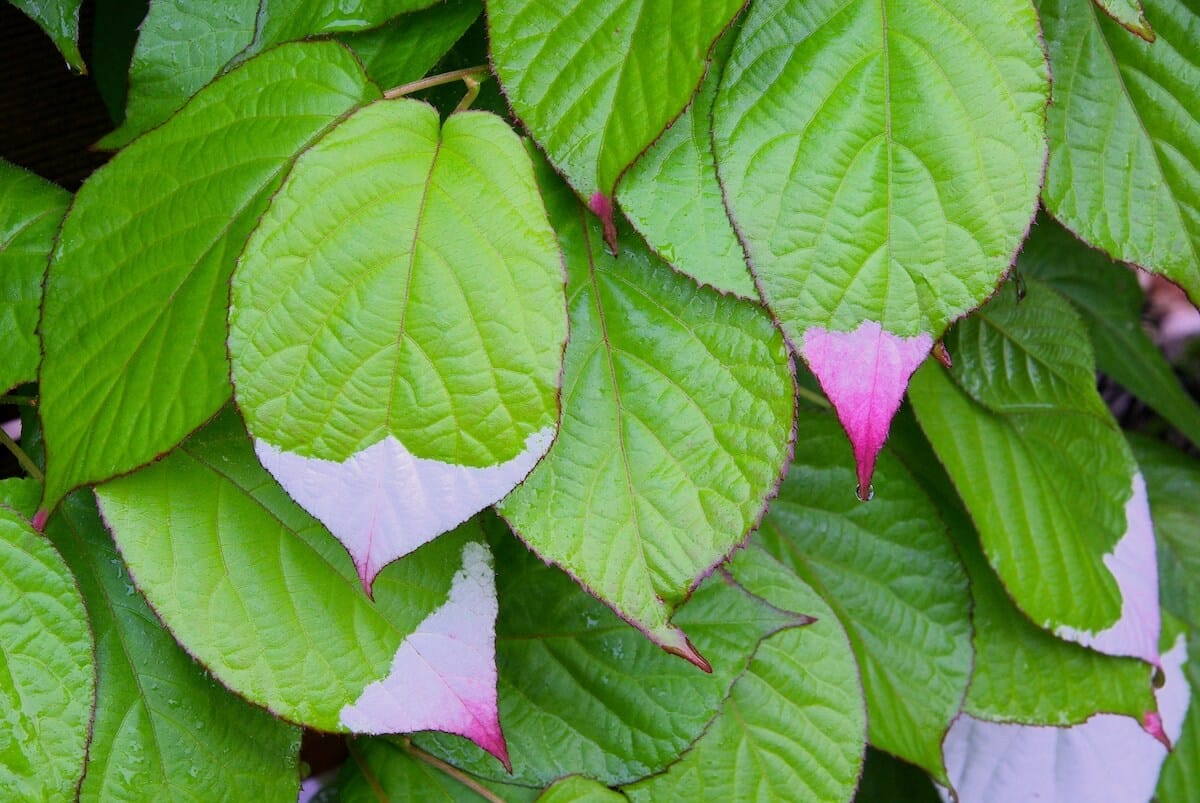
Frequently Asked Questions
Q: Where can I buy Actinidia kolomikta for my garden?
A: You can buy Actinidia from various online retailers such as Swift Plants, Amazon or local garden centres. Look for mature options in a 3 litre pot for a good start.
Q: How tall does Actinidia kolomikta grow?
A: This climbing vine typically reaches heights of 4 metres (12 feet) when properly supported. Its vigorous growth makes it perfect for covering walls, fences, or pergolas over several years.
Q: What makes the foliage so special?
A: The leaves display striking variegation with splashes of pink and white against green, particularly on male plants. This unique colouring develops as the leaves mature, creating an eye-catching display from late spring onwards.
Q: Does it need a male and female plant to produce fruit?
A: Yes, you’ll need both male and female plants for fruit production. One male can pollinate up to eight female plants. The male plants typically show more dramatic leaf variegation.
Q: What growing conditions does it prefer?
A: Actinidia kolomikta thrives in well-drained, fertile soil in partial shade to full sun. It performs best when its roots stay cool and moist while the vine grows into sunlight.
Q: How hardy is Actinidia kolomikta?
A: This tough vine withstands temperatures down to -10°C (14°F), making it one of the hardiest kiwi species. It suits most UK gardens, even in northern regions.
Q: When does it fruit?
A: Small, sweet fruits develop on female plants in late summer to early autumn. These grape-sized kiwis taste sweeter than regular kiwi fruit and don’t need peeling.
Q: What support does it need?
A: Install strong trellises, wires, or other climbing supports before planting. The vine climbs through twining stems rather than tendrils, so guide young growth onto supports initially.
Q: How should I prune it?
A: Prune in late winter or early spring before new growth starts. Remove dead or crossing branches and trim back long shoots to maintain shape and size.
Q: What about watering and feeding?
A: Water regularly during the growing season, especially in the first year. Apply a balanced fertiliser in spring and mulch annually with well-rotted compost.
Q: Are there any pest or disease problems?
A: Actinidia kolomikta shows good resistance to pests and diseases. However, watch for signs of vine weevil or late frost damage on young growth. Good air circulation helps prevent fungal issues.
Related Articles
Lonicera periclymenum Rhubarb and Custard
Honeysuckle Full sun to partial shade Any aspect - north, south, east, or west-facing Sheltered or exposed positions Ideal against walls, fences, or through trees Tolerates temperatures down to -20°C (-4°F) Fully hardy throughout UK Moist but well-drained soil Adapts...
Lonicera Belgica – Early Dutch Honeysuckle
Early Dutch Honeysuckle Partial shade to full sun North, south, east, or west-facing aspects Sheltered or exposed sites suitable Best against walls, fences, or climbing through trees Tolerates temperatures down to -20°C (-4°F) Fully hardy throughout UK Moist but...
Lonicera x heckrottii American Beauty
Honeysuckle Full sun to partial shade East, west, or south-facing aspects Sheltered or exposed locations suitable Fully hardy in UK climate Tolerates temperatures down to -15°C (5°F) Thrives in moist but well-drained soil Adaptable to clay and loam soils Suits acid,...
Lonicera Serotina – Late Dutch Honeysuckle
Late Dutch Honeysuckle Best in partial shade, though tolerates full sun Suitable for east, west, south, or north-facing aspects Can be grown in exposed or sheltered locations Fully hardy in UK climate Tolerates temperatures down to -20°C (-4°F) Adaptable to chalk,...
Lonicera periclymenum Strawberries and Cream
Honeysuckle Full sun to partial shade Sheltered from strong winds North, east, or west-facing walls suitable Fully hardy in UK climate Tolerates temperatures down to -15°C (5°F) Moist but well-drained Rich in organic matter Fertile loam ideal Adaptable to all soil...
Lonicera japonica Halls Prolific
Japanese Honeysuckle Full sun or partial shade South or west-facing aspect ideal Sheltered from strong winds Can grow in north-facing positions but may flower less Hardy down to -15°C (5°F) Semi-evergreen in mild winters, deciduous in harsh winters Moist but...
Lonicera x tellmanniana
Tellmann's Honeysuckle Prefers full sun or partial shade Ideal for a south-west facing position Should be sheltered from strong winds Roots enjoy cool conditions while the stems reach for sunlight Hardy down to -15°C to -10°C (5°F to 14°F) Thrives in moist but...
Lonicera periclymenum
Common Honeysuckle Prefers full sun to partial shade A sheltered spot is ideal to protect from harsh winds Can survive temperatures down to -15°C (5°F) Thrives in well-drained soil Can adapt to a range of soil types, including clay, loamy, and sandy soils Prefers...
Hedera helix Glacier
Glacier Ivy North, east, or west-facing walls Partial to full shade Sheltered from strong winds Can tolerate full sun in cooler areas Down to -15°C (5°F) Well-drained soil Medium moisture retention Rich in organic matter Clay, loam, or sandy soils all suitable Neutral...

